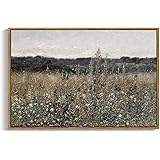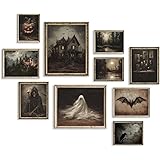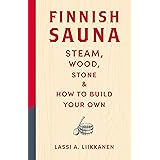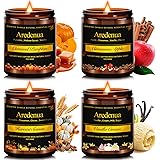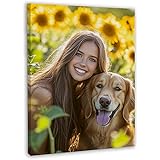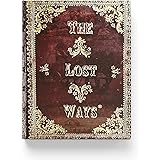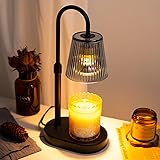Welcome back, 3DIPS Creation Family! In this insightful Part 23 of our 3D Modeling Tutorial Series, we observe the meticulous process of transforming a basic structure into a vibrant diner house using Autodesk Maya. The video focuses on adding crucial kitchen and diner assets, culminating in precise object placements like a flower pot rotated exactly 27.671 degrees on one side and -83.216 degrees on the other, demonstrating the importance of numerical precision in 3D design.
This tutorial offers invaluable guidance for enhancing virtual environments, especially for those working on a detailed kitchen decorating technique in Maya. As digital artists, understanding how to strategically populate a scene is just as vital as the initial modeling phase. Achieving a realistic and immersive scene often hinges on these finishing touches and thoughtful prop placements.
1. Elevating Ambiance: Strategic Lighting Setup in Maya
Lighting is arguably the most critical component in bringing any 3D scene to life. The video highlights how standard ceiling lights and supplementary tube lights dramatically enhance the diner house’s atmosphere. Without adequate lighting, even the most intricately modeled scene can appear flat and uninviting, lacking the depth and realism that professional renders demand.
Integrating Ceiling and Wall Lights
The initial placement of ceiling lights above each table is a foundational step, creating focused illumination that mimics real-world diner settings. Utilizing Maya’s transform tools, specifically the W key for translation, allows for precise alignment in side and top views. This ensures that each light fixture is centered and appropriately positioned relative to the dining tables.
Following this, the introduction of tube lights addresses areas where ambient light might be insufficient. These wall-mounted fixtures provide a broader, more even spread of light, reducing harsh shadows and adding a layer of functional illumination. Experimenting with different light types in Maya, such as point, spot, or area lights, and adjusting their attributes like intensity, color, and decay rate, can significantly impact the final mood of your diner environment.
2. Adding Character: Decorative Elements and Prop Placement
After the lighting, the scene truly begins to take shape with the addition of decorative and functional assets. The video explores the placement of flower pots, beer barrels, and wine glasses, each contributing to the diner’s unique narrative.
Refining Decorative Touches with Flower Pots
The quest for the perfect flower pot placement illustrates a common challenge in 3D environment design: balancing aesthetics with functional realism. Initially considered for individual tables, the narrator’s decision to move them to the main entry point underscores a key principle. Large decorative elements often serve best in welcoming areas, filling otherwise empty spaces and making a grand statement. This adjustment, involving careful scaling with the R key and precise numerical rotations, transforms a blank entryway into an inviting focal point.
Consider the psychological impact of such elements; a well-placed plant can suggest freshness and attention to detail, making the virtual space feel more lived-in. When adding decorative props, always ask what story they tell and how they contribute to the overall mood of the scene. Precision in rotation values, like the -83.216 degrees mentioned, ensures symmetry and visual balance, crucial for a professional finish in your Maya kitchen asset creation.
Functional Props: Beer Barrels and Wine Glasses
To further enhance the diner’s functionality and realism, the tutorial introduces a beer barrel and wine glasses. These props are not just decorative; they define the specific utility of certain areas within the diner. A beer barrel on a table instantly suggests a casual drinking spot, differentiating it from other dining areas.
The video demonstrates the meticulous process of positioning the barrel, rotating it by -22 degrees for optimal visual appeal, and then adding multiple wine glasses. Using Maya’s Shift key for individual copies and Shift+D for repeating transformations significantly speeds up the workflow. Grouping these objects (Control+G) and adjusting their pivot points allows for easier manipulation of entire sets, streamlining the prop placement process across your 3D diner house modeling project.
3. Optimizing Your Workflow: Tips for Efficient Asset Management in Maya
Beyond individual asset placement, the video subtly highlights best practices for an efficient 3D modeling workflow. These techniques are essential for managing complex scenes and preparing for subsequent stages like UV mapping and texturing, which are mentioned as the next steps in this series.
Leveraging Grouping and Instancing
The grouping of wine glasses into a single entity (Control+G) is a prime example of optimizing scene management. Grouping allows you to move, rotate, and scale multiple objects simultaneously, saving considerable time. For identical objects, utilizing Maya’s instancing feature (Edit > Duplicate Special > Instance) can further enhance performance. Instances share mesh data, reducing file size and improving viewport responsiveness, especially in environments with numerous repeating elements.
The Importance of Multiple Viewports
Throughout the video, the narrator consistently emphasizes switching between multiple views (side, top, front) to achieve precise object positioning. This is a fundamental aspect of 3D modeling. Relying on a single perspective can lead to misalignments and objects appearing to float or intersect incorrectly. Regularly checking your asset placements from different angles ensures accuracy and realism in your virtual environment design.
4. The Path Ahead: UV Unwrapping and Texturing
As this series approaches its conclusion, the narrator teases the upcoming UV unwrapping and texturing phases. These stages are critical for adding surface detail, color, and material properties to your 3D models. UV unwrapping involves flattening the 3D mesh into a 2D space, which then allows for the application of texture maps.
Proper UV layout is crucial for preventing texture distortion and ensuring high-quality renders. Following unwrapping, texturing applies a wide range of maps—color (albedo), roughness, metallic, normal, and displacement—to give materials their unique look and feel. This upcoming focus will transform the modeled geometry into truly convincing surfaces, bringing the 3D kitchen decorating technique in Maya to its final, polished state.


